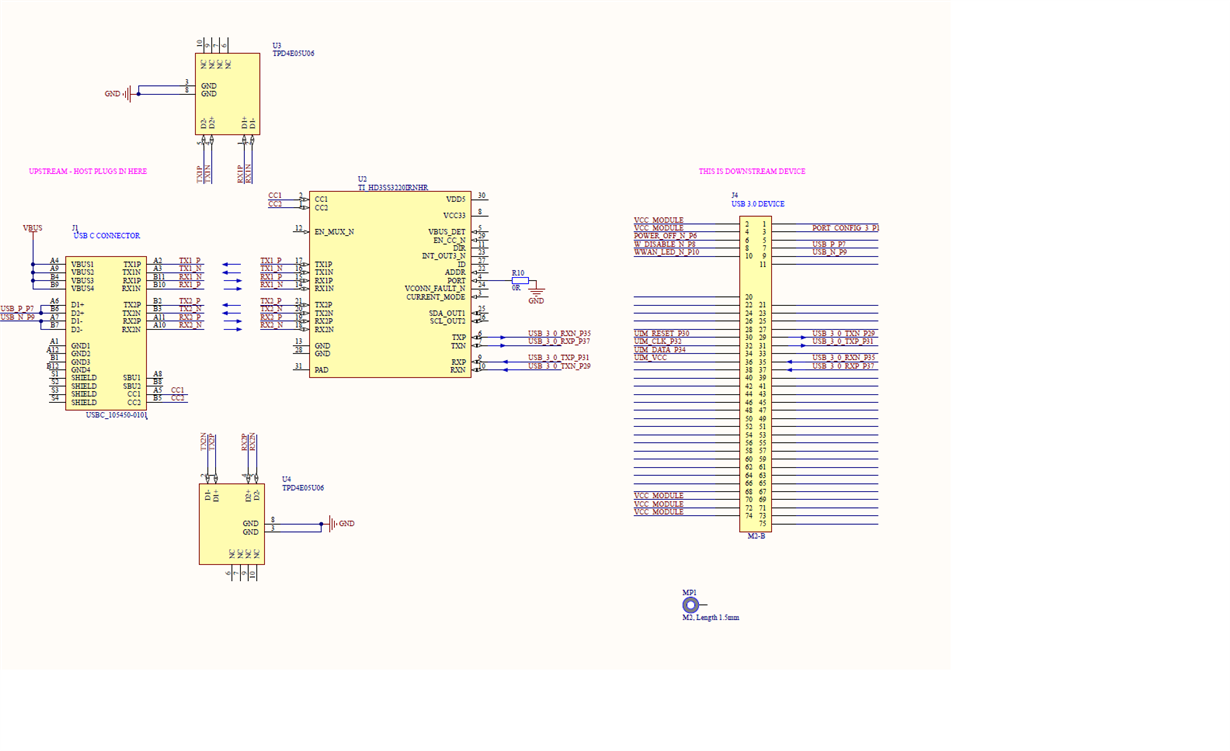Hi
I'd like to use the HD3SS3220 to interface a USB C device connector to a USB 3.0 device on the same PCA
I am concerned about getting the connector / device interconnections correct e.g. should it be TX-TX, RX-RX (not the differential pairs)
The following is an attempt at modelling this
[UPSTREAM?] <----->[DOWNSTREAM?]
[USB_3.x_HOST][USB C]----standardCable-->[USBC] ---pcbTx1or2DifPair--> [ RX1or2 HD3SS3220] [ TX HD3SS3220] ---pcbTxDifPair -->[USB_3.xDEVICE_RX]
[USB_3.x_HOST][USB C]<---standardCable---[USBC] <--pcbRx1or2DifPair-- [ TX1or2 HD3SS3220] [ RX HD3SS3220]<--pcbRxDifPair---[USB_3.xDEVICE_TX]
I'm pretty certain this is incorrect - any ideas how this should be connected
Many thanks
John




